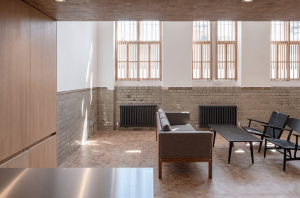Climate conscious designs are more common today than ever before. However, it can be tricky to work with the restrictions of keeping the buildings as green as possible. Often it requires a careful selection of materials and building techniques. Luckily, there are lots of different things you can do to reduce the carbon footprint. We want to have a look at some of them below, then if you need help with residential architecture in London, you can come to us.
CLT
 One material that is becoming very popular is the use of cross laminated timber. The engineered wood product has some fantastic properties. Because it is wood and glue, it is a much greener alternative to steel and concrete. The form with layers orienting in different directions gives the CLT impressive strength. You can use it for framework, structural panels, and more.
One material that is becoming very popular is the use of cross laminated timber. The engineered wood product has some fantastic properties. Because it is wood and glue, it is a much greener alternative to steel and concrete. The form with layers orienting in different directions gives the CLT impressive strength. You can use it for framework, structural panels, and more.
An interesting thing here is you can use simple forms to create an efficient design. You can also create large spans with minimal transfer structures such as columns and load bearing walls. What this can do is minimise the overall cost and use of materials.
Arches
A second interesting idea is to incorporate arches into a design. They can be a more efficient structural form than relying on beams and other reinforcement techniques. Again this can save on materials to reduce the carbon footprint.
Local materials
Another fantastic option is to shop locally for materials. This is wise whether you create residential architecture in London or other buildings anywhere else in the world.
One of the biggest issues when it comes to the carbon footprint of buildings is how far resources have to travel. For example, if you use Italian marble, it has come a long way to get to your property. That translates to a lot of greenhouse gases. It is much better use materials from the local area so they don’t have to travel as far.
Insulation
Most people know how important it is to insulate buildings to improve the energy efficiency. It can reduce heating and cooling costs massively. However, a number of insulation materials have a large carbon footprint because they are derived from petroleum or other chemicals. This includes common products such as polystyrene foam.
You can make a property greener and get quality insulation without relying on materials with a high carbon footprint. There are alternatives such as cellulose, straw, or mineral wool.
Recycled materials
Finally, one of the best things you can do is use recycled or reclaimed materials. What you have to keep in mind is that any new materials, even green eco-friendly ones, emit carbon from the production and procurement. So, if you can use existing materials you aren’t adding more emissions to the climate.
The most ideal solution here is to use local recycled materials. What you get is the perfect combination of saving on new emissions by using existing resources and also reducing how far they need to travel.
Design residential architecture in London with a small carbon footprint
Coffey Architects loves working with clients to help them create wonderful buildings. Your goal may be to create a home that is gentle on the environment. Or it could be you simply want to ensure it will be cheap in terms of operating costs. Whatever your goal, we will achieve it with you.
So, get in touch if you want to create residential architecture in London that has a small carbon footprint. We can look at all kinds of options with you, including different materials, building techniques, and tech.
